
FRIENDS OF ASOR WEBINAR SYMPOSIUMS
Tel Rehov: A Major Bronze and Iron Age City in the Jordan Valley
- 4 hours of lectures and panel discussion
- 5 internationally renowned scholars
- Proceeds fund membership scholarships & online resources
12:00pm – 12:45pm
Amihai Mazar
The Hebrew University of Jerusalem
Introducing Tel Rehov: The Regional Project, the Site and its Identification, and Survey of the Main Results and Historical Implications
This lecture will provide a general introduction to the Tel Rehov excavations and will present some of the main results. The most significant points are the unusual foundation of a new large city in the Late Bronze Age, the continuity of Canaanite urban life with no significant break until the beginning of the Iron Age II, and the plethora of finds from the Iron Age IIA (10-9th centuries B.C.E). All these discoveries make this city one of the most important sites for studying society, economy, religious practices, and historical issues of the northern kingdom of Israel and the origin of the Nimshite Dynasty.
12:45pm – 1:05pm
Nava Panitz-Cohen
The Hebrew University of Jerusalem
From Spade to Shelf: The Research and Publication of the Tel Rehov Excavations
All archaeology enthusiasts are familiar with the excavation report as presented in a handsome volume sitting on a shelf in the library or in our homes. As someone who has participated in the process of bringing what the spade unearths in an excavation to the final product on your shelf, I will share with you some of the highlights – and frustrations – of this process and why it is, on the one hand, the bane of many archaeologists, yet on the other hand, perhaps the most-important part of any excavation.
1:05pm – 1:15pm
Break
1:15pm – 1:40pm
Amihai Mazar & Nava Panitz-Cohen
The Hebrew University of Jerusalem
What’s the Buzz? The Iron Age Apiary at Tel Rehov
A unique apiary was discovered at Tel Rehov during excavations from 2005 to 2007. About 30 hives made of unfired clay and straw were found in a destruction layer. Reconstruction indicates that there were 100-200 hives arranged in a well-organized system. This is the only apiary discovered so far in the ancient Near East and the Mediterranean world. Remains of charred honeycombs found in the hives contained charred bees, which were identified as most probably an Anatolian subspecies. These discovery raises many questions about subsistence and the economy that will be addressed in this lecture.
1:40pm – 2:05pm
Nava Panitz-Cohen
The Hebrew University of Jerusalem
The Unique Northwestern Quarter at Tel Rehov in its Biblical Historical Context
Among the numerous and fascinating finds from the Tel Rehov excavations is a quarter in the northwestern part of the tell, overlooking the Beth-Shean Valley. The quarter is composed of a series of inter-related buildings, each one with a unique plan. All of the buildings contain a plethora of objects left untouched since the violent destruction; some of them unique, some with evidence of intense weaving and grinding as well as feasting and ritual activities. Among the highlights are inscriptions bearing the names “Nimshi” and “Elisha,” both figures mentioned in the Bible, who played pivotal roles in events that took place in this part of the Israelite kingdom.
2:05pm – 2:30pm
Nota Kourou
The University of Athens
Connections between Greece and the Levant as Reflected by Greek Pottery from Tel Rehov
After the end of the Mycenaean period, Greek pottery appears again in Eastern Mediterranean in the early first millennium BCE, mainly at coastal sites. The astonishing recovery from well-dated contexts at Tel Rehov in the Beth Shean Valley of 14 Greek sherds in Late Protogeometric and Middle Geometric style (late 10th to middle 8th century BCE) forms the largest assemblage of this kind of pottery from an inland site. This dating suggests a connection with newly identified trading routes with the Arabah Valley in Jordan, a location from which copper was exported to Aegean communities, according to recent analytical data from bronze tripods from Olympia. Thus, the Tel Rehov sherds and the exported copper from Jordan could provide a new approach to Greek and Near Eastern relations at the beginning of the first millennium BCE.
2:30pm – 2:40pm
Break
2:40pm – 3:05pm
Robert Mullins
Azusa University, California
Tel Rehov in the 8th Century BCE: Partial Revival and Assyrian Conquest and Domination
Following the destruction of Stratum IV, a smaller city was rebuilt on the upper mound. Two strata can be attributed to Iron IIB. These consist of dwellings in Areas A, B, and J. The fortification system included a casemate wall in the earlier phase and a wide city wall in the latter phase. The slaughter of people in their homes in Area A bears witness to the severity of the Assyrian destruction. Squatter activity that followed included seven burials, some with Assyrian-type bottles, possibly indicating Assyrian presence. One burial was especially rich in finds and perhaps belonged to an elite.
3:05pm -3:30pm
Naama Yahalom-Mack
The Hebrew University of Jerusalem
Metal Working at Tel Rehov
The excavations at Tel Rehov yielded hundreds of metal objects and numerous metallurgical remains that attest to on-site metalworking. The study of such remains and their distribution sheds light on metalworking practices at the site, indicating a considerable change between the Late Bronze and Iron Ages, which are defined by the choice of raw materials, their origin, and metalworking traditions. Particularly significant is the evidence for an Egyptian metalworking tradition during the Late Bronze Age, and the introduction of iron into common use during the Iron IIA (10th and 9th centuries BCE).
3:30pm – 4:00pm
Audience Q&A with all Panelists
Sponsors will be acknowledged during the event. Sponsorships are available at the following levels:
- Bronze Sponsor: $100 (includes 5 gift registrations to share)
- Silver Sponsor: $250 (includes 10 gift registrations to share)
- Gold Sponor: $500 (includes 25 gift registrations to share)
- Platinum Sponsor: $1,000 (includes unlimited gifts registrations to share)
Each sponsor will receive a confirmation e-mail. If you do not receive this e-mail, then we did not receive your sponsorship online. If you prefer to register or sponsor over the phone, please call 703-789-9230. Please e-mail membership@asor.org with any questions or issues.
Speakers / Presenters
ASOR is grateful for your support. Each registrant will receive an automated confirmation e-mail. If you do not receive this e-mail, please check you Spam folder and then contact ASOR. If you prefer to register over the phone, please call 703-789-9230. Please e-mail membership@asor.org with any questions or issues.
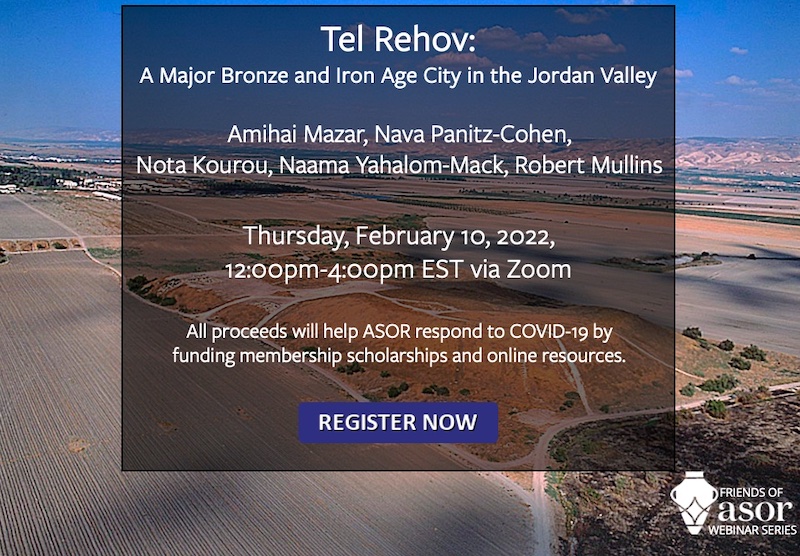

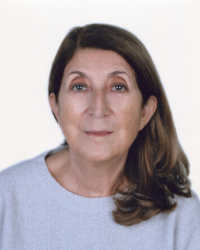 Nota Kourou is Professor Emerita, Athens University, Greece. She studied Archaeology at Athens University (BA) and continued for her Ph.D at Oxford University, (Somerville College 1974-1979). She taught first as a lecturer and later became a Professor at Athens University from 1979-2012. In 2013, she became a Visiting Professor at Brussells University (ULB). Kourou has lectured at several Universities in the United States, Australia, and Europe, and was an Onassis Senior Lecturer in the United States in 2005. She participated in various excavations in Greece and has directed the Athens University Excavation at Xobourgo on Tenos, Cyclades since 1995, which has revealed a major island settlement.
Nota Kourou is Professor Emerita, Athens University, Greece. She studied Archaeology at Athens University (BA) and continued for her Ph.D at Oxford University, (Somerville College 1974-1979). She taught first as a lecturer and later became a Professor at Athens University from 1979-2012. In 2013, she became a Visiting Professor at Brussells University (ULB). Kourou has lectured at several Universities in the United States, Australia, and Europe, and was an Onassis Senior Lecturer in the United States in 2005. She participated in various excavations in Greece and has directed the Athens University Excavation at Xobourgo on Tenos, Cyclades since 1995, which has revealed a major island settlement.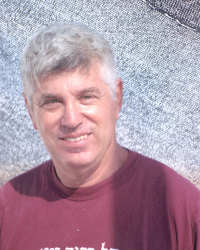 Amihai Mazar is Professor Emeritus at the Institute of Archaeology of the Hebrew University of Jerusalem. His main fields of interest are the archaeology of the Levant in the Bronze and Iron Ages and the relationship between archaeology and biblical history. He directed large-scale archaeological excavations at Tell Qasile (1973–1974, 1982–1988), Tel Batash (biblical Timnah) (1977–1989), Tel Beth Shean (1989–1996), and Tel Reḥov (1997–2012), as well as several smaller-scale projects. He is the author and editor of numerous publications, including Archaeology of the Land of the Bible, and fourteen volumes of final archaeological field reports. Mazar is a member of the Israel Academy of Sciences and Humanities and laureate of the Israel Prize for archaeological research.
Amihai Mazar is Professor Emeritus at the Institute of Archaeology of the Hebrew University of Jerusalem. His main fields of interest are the archaeology of the Levant in the Bronze and Iron Ages and the relationship between archaeology and biblical history. He directed large-scale archaeological excavations at Tell Qasile (1973–1974, 1982–1988), Tel Batash (biblical Timnah) (1977–1989), Tel Beth Shean (1989–1996), and Tel Reḥov (1997–2012), as well as several smaller-scale projects. He is the author and editor of numerous publications, including Archaeology of the Land of the Bible, and fourteen volumes of final archaeological field reports. Mazar is a member of the Israel Academy of Sciences and Humanities and laureate of the Israel Prize for archaeological research.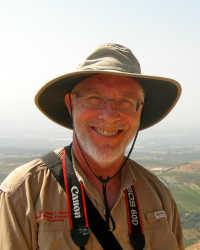 Robert Mullins is Professor and Chair in the Department of Biblical and Religious Studies at Azusa Pacific University. He received his Ph.D from The Hebrew University of Jerusalem. Prior to joining the faculty of APU, he served as a research assistant to Prof. Amihai Mazar and the Beth-Shean Valley Archaeological Project. In addition to his work at Beth-Shean, Rehov, and Gezer, Mullins has also excavated at Tell Atchana (Alalakh) and Zincirli (Sam’al) in southeastern Turkey. He currently co-directs joint excavations at Tel Abel Beth Maacah with the Hebrew University of Jerusalem. His recent publications include the Atlas of the Biblical World (Fortress Press, 2019).
Robert Mullins is Professor and Chair in the Department of Biblical and Religious Studies at Azusa Pacific University. He received his Ph.D from The Hebrew University of Jerusalem. Prior to joining the faculty of APU, he served as a research assistant to Prof. Amihai Mazar and the Beth-Shean Valley Archaeological Project. In addition to his work at Beth-Shean, Rehov, and Gezer, Mullins has also excavated at Tell Atchana (Alalakh) and Zincirli (Sam’al) in southeastern Turkey. He currently co-directs joint excavations at Tel Abel Beth Maacah with the Hebrew University of Jerusalem. His recent publications include the Atlas of the Biblical World (Fortress Press, 2019).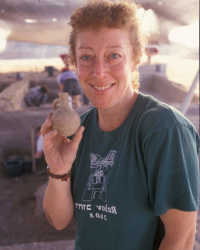 Nava Panitz-Cohen is a researcher at the Institute of Archaeology of the Hebrew University of Jerusalem, where earned her Ph.D, and is now an adjunct instructor and editor of the Qedem Monograph Series of the Institute. Her field work included Tel Batash, Tel Beth-Shean and Tel Rehov, and she participated in the publication of these sites. She is currently co-director of excavations at Tel Abel Beth Maacah in the Hula Valley in northern Israel alongside Naama Yahlom-Mack and Robert Mullins. Her research interests include Bronze and Iron Age ceramics, ceramic technology, household, gender, and experimental archaeology.
Nava Panitz-Cohen is a researcher at the Institute of Archaeology of the Hebrew University of Jerusalem, where earned her Ph.D, and is now an adjunct instructor and editor of the Qedem Monograph Series of the Institute. Her field work included Tel Batash, Tel Beth-Shean and Tel Rehov, and she participated in the publication of these sites. She is currently co-director of excavations at Tel Abel Beth Maacah in the Hula Valley in northern Israel alongside Naama Yahlom-Mack and Robert Mullins. Her research interests include Bronze and Iron Age ceramics, ceramic technology, household, gender, and experimental archaeology.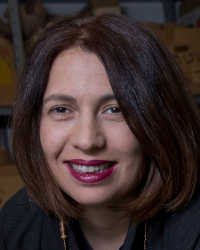 Naama Yahalom-Mack is an associate professor of Bronze and Iron Age archaeology at the Institute of Archaeology, The Hebrew University of Jerusalem, and is head of the Institute’s Laboratory for Archaeological Materials and Ancient Technologies. She is currently co-director of the Tel Abel Beth Maacah excavations in the Hula Valley. Her research focuses on archaeometallurgy and on the provenancing of archaeological materials as a proxy for reconstructing ancient trade and economic interaction.
Naama Yahalom-Mack is an associate professor of Bronze and Iron Age archaeology at the Institute of Archaeology, The Hebrew University of Jerusalem, and is head of the Institute’s Laboratory for Archaeological Materials and Ancient Technologies. She is currently co-director of the Tel Abel Beth Maacah excavations in the Hula Valley. Her research focuses on archaeometallurgy and on the provenancing of archaeological materials as a proxy for reconstructing ancient trade and economic interaction.